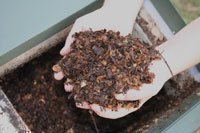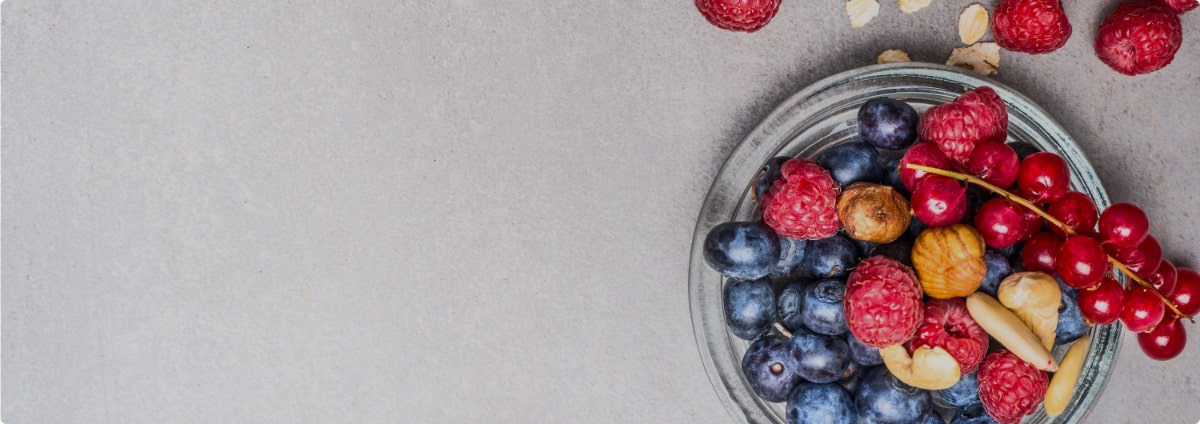Vitality 4 Life uses cookies to provide and improve our services, if you continue browsing, we consider that you accept its use. For more information, please see our privacy page.

Composting Steps with the Joraform Composters
Let's get ready to tumble!!
Composting isn't a new thing that we in the 21st century have just started doing; in fact the practice of composting is thousands of years old! There is evidence that the Romans, Greeks and the tribes of Israel all knew about compost, there are references in the bible and also in Renaissance literature by notable writer William Shakespear! Although we suspect that the steps are somewhat different these days.
Read on to find out just how easy it is to start your own compost pile with the use of a Joraform Rotating Composter.
Compost in 3 easy steps...

Step 1
To begin, simply add your daily kitchen scraps, and garden waste to a starter eg; active compost (you can purchase active compost from your local hardware or gardening store).
The insulated environment will increase in temperature; creating the ideal ecological environment for decomposing solid matter.
Step 2

Add some “brown matter” such as sawdust, hay, leaves and small twigs or shredded newspaper to ensure you have the correct ratio of wet & dry ingredients.
This creates aeration within the composter and essential for good composting!

Step 3
Rotate the barrel every couple of days or every time you add new waste to ensure adequate aeration.
Your organic, nutrient rich compost will be ready for use in around 6 weeks!
Using Sawdust or Wood Shavings in Composting
The use of sawdust / wood shavings absorbs the moisture and gives structure to the compost, keeping it well aerated. The addition of sawdust has 3 important functions. Micro-organisms need both carbon and nitrogen. For each part nitrogen (N) there needs to be 30 parts carbon (C). Green waste and food waste are very high in nitrogen. Therefore, carbon is needed to balance the waste. When you add dry sawdust, it...
- absorbs moisture
- adds structure to the finished compost
- provides a carbon source on which the micro-organisms feed
A good rule of thumb when composting is that you should have ¾ “brown stuff” such as leaves, straw, saw dust, shredded paper or wood pellets and ¼ “green stuff” such as vegetable and fruit scraps, coffee grounds, grass clippings and kitchen scraps.
Brown and Green doesn’t refer to the colour of the stuff you are actually putting into your composter either! It’s referring to carbon rich or nitrogen rich materials.
What Can I Compost?
1. Shredding your compost ingredients will speed the process of decomposition up meaning that your compost will be ready sooner.
2. The microbes responsible for breaking down your compost pile need a balanced diet of nitrogen and carbon. Nitrogen comes from green materials such as food scraps, manure, and grass clippings. Carbon comes from brown materials such as dead leaves, hay, wood chips and shredded newspaper.
3. Compost piles should remain damp. Think of a wrung out sponge. Just as too dry is bad, too wet should also be avoided.
4. Too much of any one material will slow down the decomposition process. Do not overload your composter with any one single type of material, this will throw off the balance.
5. Compost should be layered, alternating your greens and browns, and be sure to rotate your composter every couple of days for adequate aeration.
Composting FAQ's
1. Why does my compost smell bad?
If your compost is starting to smell this is an indication that the delicate balance inside your composter is off. Things like too many “greens”, too little aeration or too much moisture will cause a stench. Recognising the type of smell will help you solve the problem.
Smells like sewage or ammonia
Too much “green” material. Solution: add more “brown” material.
Smells like rotten eggs
Your compost is compacted or not getting enough air. Solution: Turn your compost more frequently, you may also want to add another light layer of “brown” material to stop the pile from compacting again.
Smells putrid or fetid:
Your compost is too wet, it will also be compacted and slimy. Solution: Add a layer of “brown” material to absorb the moisture and ensure that you rotate regularly.
2. My compost is attracting animals!
If your compost is starting to attract vermin or other 4 legged animals it may be because you are including meat into your compost. While meat fish can be added into your composter it is best to wait until you are very adept with the process otherwise you will not only attract rodents but your compost can run into all sorts of trouble by the meat not breaking down. If you are going to add meat you must make sure that your composter is properly sealed so that they can not get inside the unit.
3. Why isn't my compost getting hot?
Many compost piles have too much “brown” material and not enough “green” material. It is a delicate balance and can take practice. Decomposition of organic materials is greatly increased when you create the right balance of carbon to nitrogen. As mentioned above a good rule of thumb is ¾ brown matter (carbon rich material) and ¼ green matter (nitrogen rich material).
4. What do I do with the compost once it’s mature and ready to use?
Compost or “Black Gold” as it is sometimes referred to is one of the best ways to help your garden grow and flourish. It can help your plants to retain vital nutrients and water and is a cost effective way to enhance a thriving botanical environment.
You simply need to dig it into your soil to improve it’s condition, spread it out on top of your garden as a top layer from which your plants can draw out the nutrients or you can make a rich compost tea to pour directly onto your plants for an instant boost!
5. Does compost produce liquid?
Yes, some liquid production is unavoidable, and most composters are not water tight so it is best to keep your composter outside. The moisture content is generally regulated by the sawdust, wood pellets or the “brown matter” It’s also important to note that you should drain your kitchen waste of any excess liquids before placing in your composter.
Enjoy seeing the transformation of your kitchen waste into nutritious compost; compost you can use to fertilise lawns, pot plants, vegetable gardens and flower beds.
OUR FAVOURITE COMPOST TUMBLERS
[product id="1052"]
[product id="1053"]
[product id="272"]












